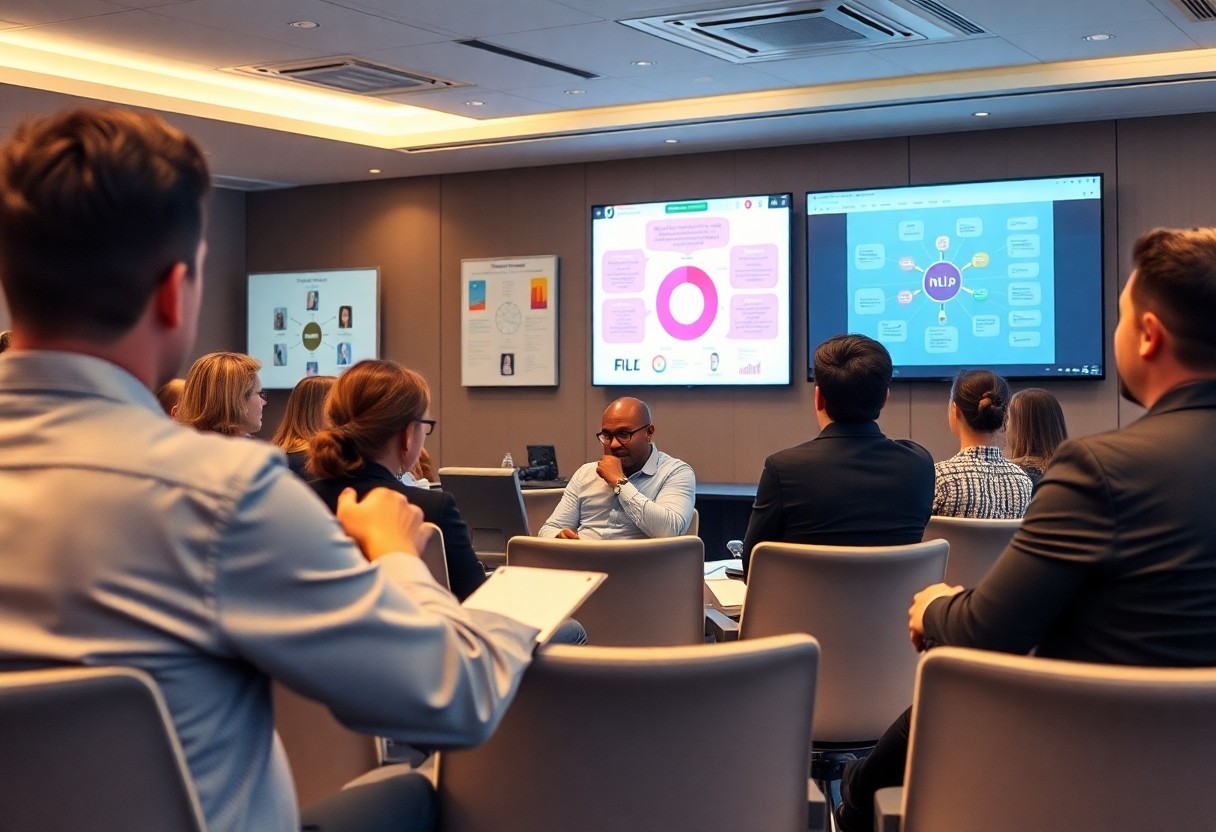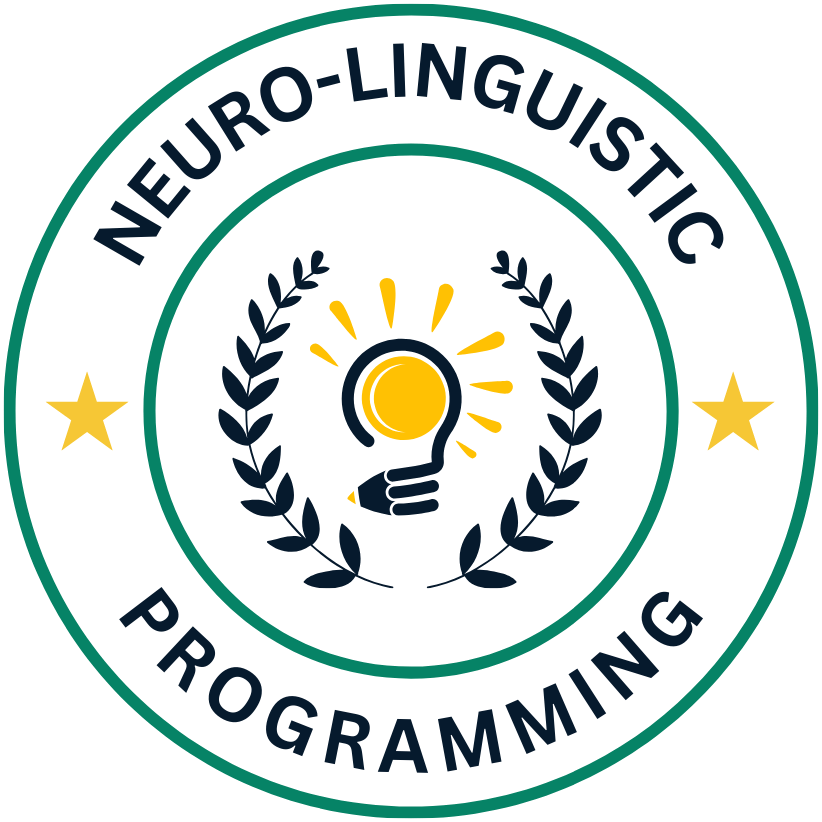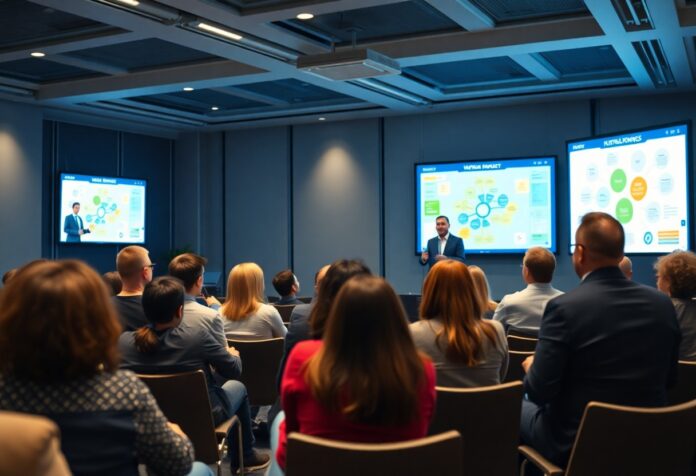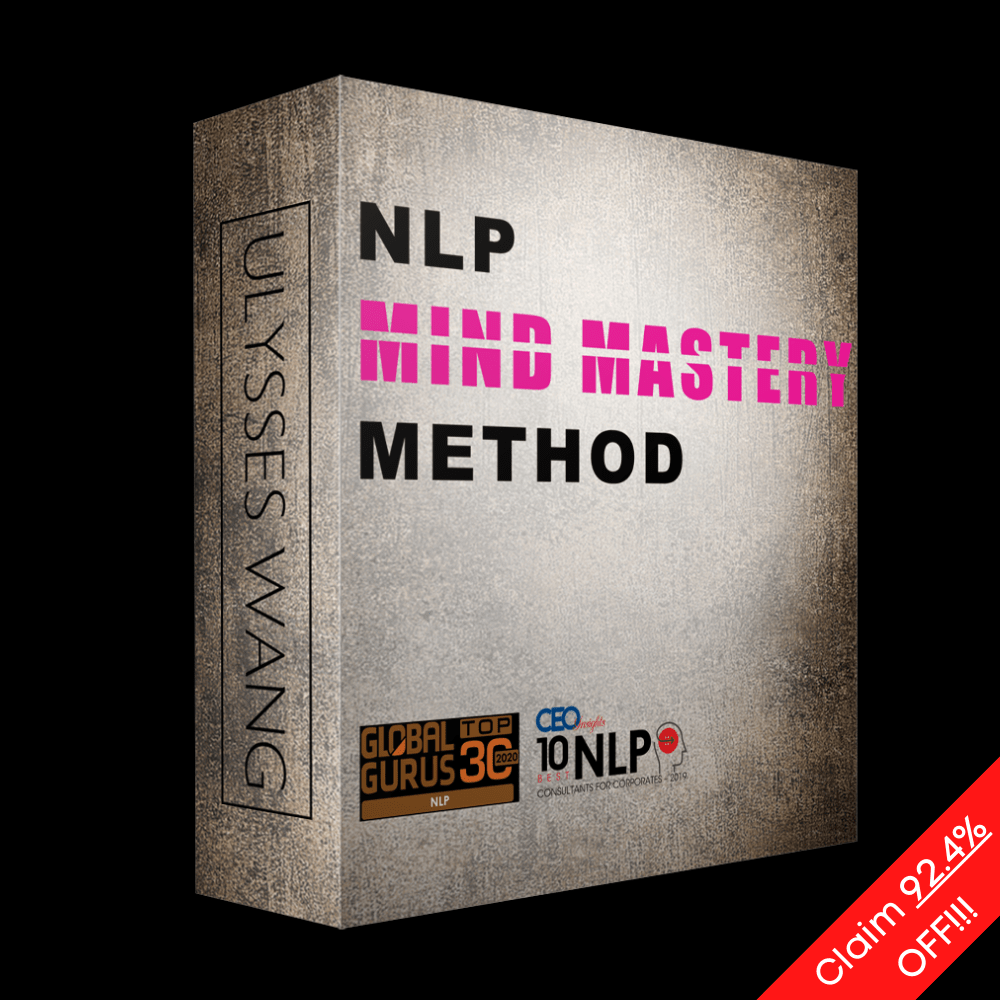Most presenters struggle to connect with their audience, missing the opportunity to leave a lasting impact. By incorporating advanced techniques from Neuro-Linguistic Programming (NLP), you can enhance your communication skills, engage your listeners, and create a dynamic atmosphere. This guide will provide you with practical strategies to elevate your presentations, ensuring that your message resonates deeply and fosters meaningful connections. Get ready to transform your delivery and captivate your audience like never before.
Understanding NLP Fundamentals in Presentations
Before exploring into advanced techniques, it’s important to understand the foundations of Neuro-Linguistic Programming (NLP) as they apply to presentations. NLP is a powerful approach that explores the connections between neurological processes, language, and behavioral patterns. By enhancing your understanding of these elements, you can create presentations that resonate deeply with your audience, leading to better engagement and retention. This knowledge enables you to tailor your delivery in a way that captivates and connects with listeners, making your communication more effective.
How to Identify Your Audience’s Preferred Communication Styles
With an awareness of your audience’s preferred communication styles, you can better frame your message to reflect their needs and expectations. People generally communicate through three primary modalities: visual, auditory, and kinesthetic. By observing cues in their language and behavior, such as the words they use or how they engage with visual aids, you can discern their styles. For example, a visual learner may respond well to charts and images, while an auditory learner may benefit from storytelling elements.
Key Factors of Sensory-Based Language Patterns
One of the most effective strategies in NLP is the use of sensory-based language patterns, which allows you to paint vivid pictures in the minds of your audience. Utilizing language that engages the senses helps individuals absorb information more deeply, making your presentation memorable. Consider incorporating phrases that appeal to sight, sound, touch, taste, and smell to create a multisensory experience. For instance, saying “imagine the vibrant colors of a sunset” or “listen to the soothing sounds of nature” enables the audience to experience your message more fully.
- Use descriptive language that evokes strong imagery.
- Incorporate metaphors that relate to sensory experiences.
- Encourage your audience to recall personal memories connected to the senses.
The effectiveness of sensory-based language patterns significantly enhances the relatability of your presentation. By anchoring your message in sensory imagery, you create a stronger emotional connection with your audience. This connection can be achieved through carefully crafted language that elicits a sense of belonging and understanding. Engaging your audience in this way ensures that they are not merely passive listeners but active participants in your narrative.
- Focus on using phrases that reflect the sensory preferences of your audience.
- Balance visual, auditory, and kinesthetic elements in your presentation.
- Facilitate interactive moments to stimulate sensory engagement.
Mastering Verbal Communication Techniques
Any effective presentation relies heavily on your ability to connect verbally with your audience. One fundamental approach is through the pacing and leading technique, which allows you to establish rapport before guiding your audience toward your desired outcome. This technique involves matching the audience’s state or energy level initially and then gradually leading them to a state more aligned with the message you wish to convey. To implement this method successfully, you can follow these tips:
Tips for Implementing Pacing and Leading Methods
- Observe your audience’s body language and tone.
- Adjust your speech tempo to match theirs in the initial stages.
- Gradually introduce changes in your pacing once they’ve resonated with you.
- Utilize pauses for emphasis to capture attention effectively.
After you establish a comfortable connection with your audience, you can seamlessly guide them to engage positively with your message, ensuring they’re more receptive to the information being presented.
If you want to leave a lasting impact with your presentations, employing metaphors and stories can enhance your communication. By transforming abstract concepts into relatable narratives, you create an emotional connection that resonates deeply with your audience. Effective use of storytelling invites your listeners to envision scenarios that reinforce your main points, making them more memorable. To optimize this technique, consider the following strategies:
How to Use Metaphors and Stories Effectively
Communication is greatly enhanced when you weave together metaphors and stories that support your key messages. Selecting relatable and vivid examples that tie back to your core themes can stimulate your audience’s imagination and emotions while making complex ideas easier to grasp. Incorporating personal anecdotes or real-life case studies can further engage your listeners, making the overall presentation not just informative, but also enjoyable and impactful.

Nonverbal Communication Enhancement
Some of the most impactful moments in a presentation are often communicated without words. Optimization of your body language can inject enthusiasm, confidence, and emotional connection into your presentations. It is paramount to align your body language with your spoken words so that your message resonates with your audience. To effectively enhance your body language, consider these vital factors:
Essential Factors in Body Language Optimization
- Maintaining eye contact to establish trust and engagement.
- Using open gestures to invite participation and convey sincerity.
- Adapting your posture to project confidence and authority.
- Modulating your facial expressions to mirror the emotions of your topic.
Recognizing the importance of these elements can transform your delivery and heighten the impact of your overall message. Engaging your audience on a nonverbal level not only emphasizes your points but also creates a memorable experience for them.
How to Establish Powerful Anchoring Techniques
An effective way to enhance your presentations is through the establishment of powerful anchoring techniques. These techniques allow you to create strong associations in the minds of your audience members by tying certain emotional states to specific gestures, phrases, or visuals. By anchoring positive feelings to critical moments in your presentation, you help ensure that your message sticks long after the talk has concluded.
Powerful anchoring techniques can be implemented by deliberately linking particular gestures to specific emotional states you wish to evoke. For instance, if your goal is to inspire motivation, you might use a dynamic hand motion when making a key point that embodies that feeling. Additionally, you can employ visual aids or even music that resonates emotionally with your subject matter. By practicing these techniques, you can create a cocktail of emotions that not only engages your audience but also ensures the lasting impact of your presentation.
Building Rapport with Your Audience
Many presenters struggle to connect with their audience, yet establishing rapport is key to delivering an impactful presentation. When you build a genuine connection, your audience is more likely to be engaged, receptive to your message, and open to sharing feedback. With the techniques of Neuro-Linguistic Programming (NLP), you can learn to quickly create this connection, making your presentations not only more enjoyable but also more effective.
Tips for Creating Instant Connections
Some effective ways to create instant connections with your audience include the following strategies:
- Use personalized stories or anecdotes that resonate with their experiences.
- Make eye contact and operate within their personal space to enhance intimacy.
- Utilize positive body language, such as open gestures and smiling.
- Tailor your language to reflect the values and interests of your audience.
- Employ active listening techniques to acknowledge audience feedback.
After implementing these strategies, you’ll not only create a welcoming environment but also leave a lasting impression that encourages ongoing dialogue.
How to Maintain Engagement Throughout
Rapport is not a one-time effort but a continuous process throughout your presentation. To ensure your audience remains engaged from start to finish, it’s important to actively involve them. You might ask rhetorical questions that provoke thought, incorporate interactive segments, or utilize multimedia elements that stimulate visual interest. Frequent references to audience feedback will also reinforce your connection and keep their attention focused on your message.
Plus, fostering a sense of community during your presentation can dramatically enhance engagement. Create opportunities for participation, encourage networking among attendees, or delegate small tasks to them. These techniques not only enhance the learning experience but also help solidify the rapport you’ve built, leading to a dynamic and memorable session that resonates long after you’ve finished speaking.
Advanced Language Pattern Techniques
Your presentations can greatly benefit from advanced language pattern techniques that leverage the principles of NLP. By mastering these patterns, you can engage your audience more effectively and create a connection that resonates. To elevate your presentation skills, consider incorporating the following advanced language patterns into your delivery:
- Utilize embedded commands to subtly direct your audience’s attention.
- Incorporate sensory language to evoke vivid imagery and emotions.
- Employ metaphorical storytelling to simplify complex ideas.
- Use the double bind technique to offer choices that lead to a desired outcome.
- Practice pacing and leading to establish rapport and guide your audience’s thoughts.
For further insights, explore 5 (NLP) Neuro-Linguistic Programming Techniques that can enhance your presentation style.
Advanced Language Patterns Overview
| Language Pattern | Description |
| Embedded Commands | Subtle instructions hidden within your speech that prompt action. |
| Sensory Language | Using descriptive, sensory details that resonate emotionally with your audience. |
| Metaphors | Analogies that simplify complex themes and foster understanding. |
| Double Binds | Offering two options that both lead to the desired outcome. |
| Pacing and Leading | Establishing common ground before introducing new ideas. |
Implementing Milton Model Language Patterns
The Milton Model is a set of linguistic patterns designed to bypass the conscious mind and connect with your audience on a deeper level. By using vague and ambiguous language, you create room for interpretation, allowing your audience to fill in the gaps with their own experiences and emotions. This fosters a sense of ownership over the content and enhances the impact of your message. Techniques such as nominalizations, open loops, and presuppositions can make your delivery more compelling and engaging.
In practice, incorporating these patterns involves being mindful of how you phrase your ideas. Use suggestions that encourage your audience to explore their thoughts while framing opportunities for them to benefit from your content. When done effectively, the Milton Model can transform the way your audience perceives your message, leading to a memorable and influential presentation.
How to Use Presuppositions Effectively
An vital aspect of persuasive communication lies within the use of presuppositions—statements that imply additional meaning. By structuring your sentences to presuppose information or beliefs, you can guide your audience toward the conclusions you desire them to draw. This technique subtly influences their thinking, encouraging acceptance of your ideas without challenging the content directly. For instance, instead of stating “You will enjoy this information,” you could say, “As you find this information valuable, consider how it can help you.” This approach effectively paves the way for your audience to internalize your message.
By integrating presuppositions into your presentations, you can create a seamless flow of ideas that resonates with your audience. This technique not only makes your communication smoother but also enhances the persuasiveness of your message, encouraging your audience to align their thoughts and outcomes with your intended goals.
Language reflects our perception of reality, and by mastering the use of presuppositions, you equip yourself with a powerful tool to influence the beliefs and attitudes of your audience. Carefully curated language can shape how your information is received and processed, ultimately creating an environment where your ideas thrive and drive action.
Presentation Structure Optimization
To maximize the impact of your presentation, it’s vital to focus on key factors in content organization. This means that your information should flow logically and cohesively, allowing your audience to easily follow your ideas. Effective structuring contributes to maintaining attention and ensures your message is delivered clearly. Consider employing narrative frameworks, such as the problem-solution or chronological structure, to make your points resonate. Key factors in content organization include:
- Clear introduction with objectives outlined
- Logical flow between sections
- Use of transitions to guide the audience
- Summarizing key points throughout the presentation
- Concluding with a strong call to action
Thou must consistently evaluate and refine your structure, ensuring that each element serves a purpose in advancing your overall message.
Tips for Creating Memorable Opening and Closing Statements
Clearly, the opening and closing statements are pivotal moments in your presentation that set the tone and leave a lasting impression. A strong opening engages your audience and establishes your credibility, while a powerful closing reinforces your message and encourages action. Explore various strategies to enhance these key moments, such as storytelling, posing thought-provoking questions, or utilizing impactful quotes. You might consider the following tips:
- Start with an intriguing fact or anecdote
- Pose an engaging question that relates to your topic
- Include a brief overview of what will be covered
- Summarize your main points clearly
- End with a strong call to action or profound statement
After mastering these elements, your audience will be far more likely to remember both your message and your delivery.
Presentation strategies should not only analyze your introduction and conclusion but also ensure that they create an emotional connection with the audience. Start your presentation with an element that resonates deeply, allowing your audience to visualize the importance of your topic. Your closing statements should gracefully wrap up your key messages, challenging your audience to think further or act on your insights. Incorporate effective techniques for lasting impact, such as:
- Using relevant anecdotes that reflect your message
- Integrating visual aids that reinforce points
- Encouraging audience participation for engagement
- Linking back to the opening statement for cohesion
- Promising follow-up information or resources
After implementing these tips, your presentation will transform into a memorable experience for your audience.
Conclusion
Following this guide on advanced techniques utilizing NLP, you now have the tools necessary to elevate your presentations to new heights. By understanding the principles of neurolinguistic programming, you can effectively shape the way your audience perceives your message, craft compelling narratives that resonate with their emotions, and employ strategic language patterns that encourage engagement. These techniques not only enhance your ability to communicate but also empower you to make a lasting impression on your audience.
Embracing these NLP strategies will enable you to connect deeply with your audience, transforming your presentations into impactful experiences. As you refine your skills, you’ll find that the art of persuasion becomes second nature, allowing you to deliver messages that inspire action and foster meaningful dialogues. Invest time in practice and experimentation with these advanced techniques, and watch as your presentations evolve into powerful vehicles for change and influence.
Q: What is NLP and how can it enhance my presentations?
A: NLP, or Neuro-Linguistic Programming, is a psychological approach that involves understanding and reprogramming the way individuals perceive the world and communicate. By utilizing NLP techniques in your presentations, you can improve your rapport with the audience, effectively convey your message, and influence their perceptions and beliefs. Techniques such as pacing and leading, anchoring emotions to specific stimuli, and utilizing strategic language patterns can create a more engaging and impactful experience for your listeners.
Q: What specific NLP techniques can I use to captivate my audience?
A: There are several NLP techniques that can significantly enhance your presentations. One effective method is the use of storytelling to engage emotions and create a connection with your audience. Additionally, employing mirroring techniques—subtly mimicking the body language and tone of your audience—can foster a sense of trust and camaraderie. Another technique is the strategic use of metaphors, which can simplify complex ideas and make them more relatable, helping your audience retain information more effectively.
Q: How can I practice and implement NLP techniques in my presentation style?
A: To practice and implement NLP techniques in your presentations, start by observing experienced speakers and noting their use of language, pacing, and body language. Then, identify specific techniques you wish to incorporate, such as anchoring or reframing messages. Rehearsing your presentations in front of peers or by recording yourself can help refine your approach. Additionally, seeking feedback on your use of NLP techniques can provide insights into how effectively you are connecting with your audience and allow for ongoing improvement.



